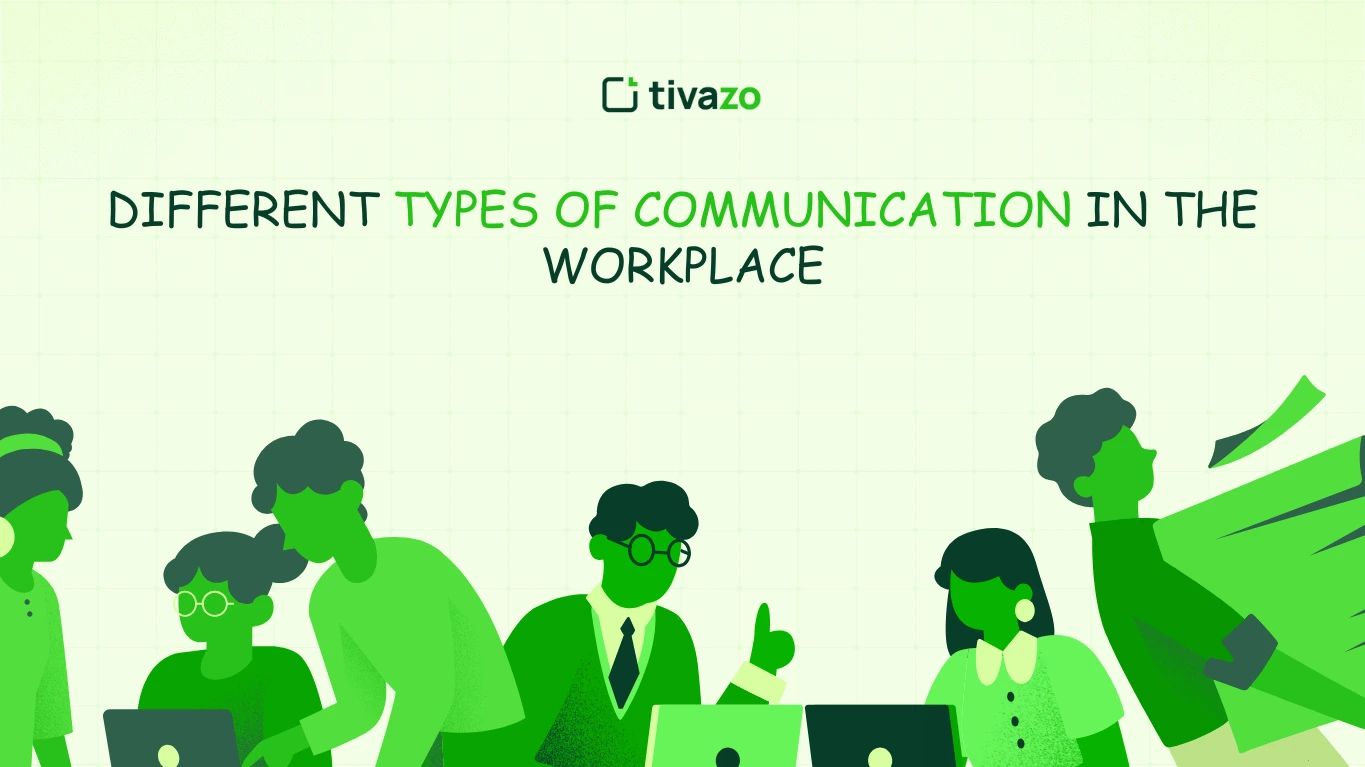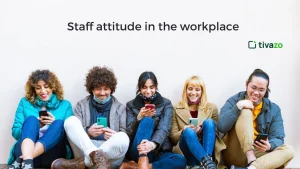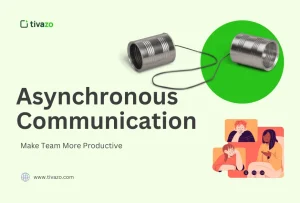Have you ever thought that you spoke clearly, and your colleague also heard a completely different thing?
Unacceptable miscommunication in the workplace not only becomes frustrating, but it also spells missed deadlines and conflict among team members. Knowledge about the existing types of communication in the working environment can help fill those gaps and produce a more united front of working teams.
Communication at the workplace does not end in meetings and emails. It covers all the nonverbal messages as well as written ones, digital chats, and feedback loops. Both types serve different purposes in forming a particular pattern of idea and problem solving and trust building between teams. By understanding different types of communication in the workplace, employees can enhance teamwork, eliminate the possibility of misunderstanding, and perform better. Adjusting your way of communicating, be it verbal, visual, or digital, is not an option in a modern, busy, and hybrid workplace. It’s essential. Now, let us look into each and every mode of communication and how it contributes to your success in your job.
💡Key Highlights:
- Top 10 Most Used Forms Of Communication At Workplace
- How Tivazo Helps Improve Workplace Communication Effectively?
Top 10 Most Used Forms Of Communication At Workplace
Effective communication at work does not involve standardized communication. These methods differ in what they are used to accomplish, and the appropriate type of phrase used at the appropriate moment may make the distinction between confusion and clarity.
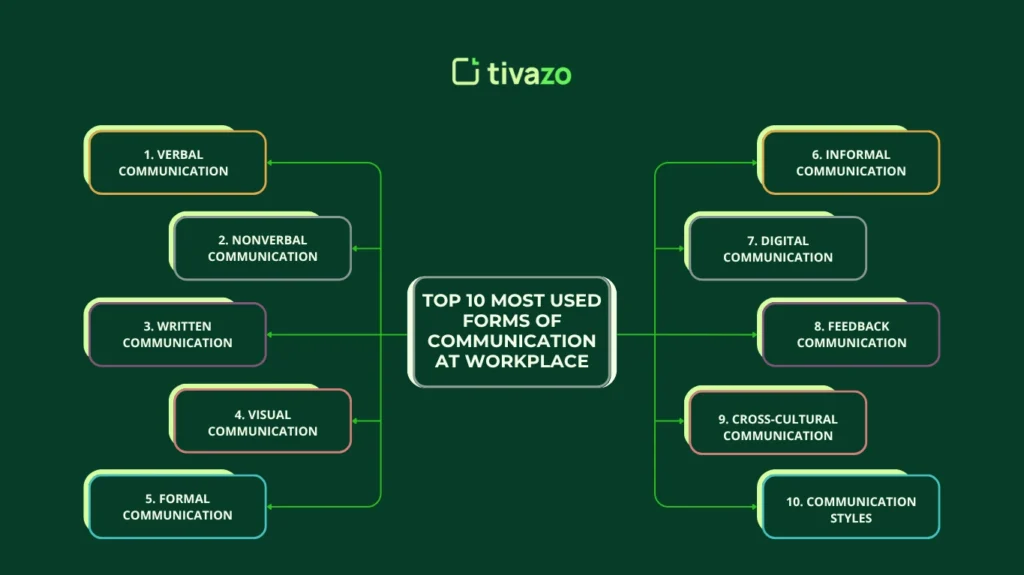
Whether it is written formals, gestures, or body language, having knowledge of these ten types of communication in the workplace can lead to improved teamwork, workplace synergies, and reduced workplace conflict.
1. Verbal Communication
Verbal communication entails communication through the use of oral expressions to exchange information. It may occur during face-to-face meetings, calls, or video conferences. Such a workplace interaction makes it possible to get feedback instantly and also contributes to strong relations based on tone and emotion.
The ability to communicate through the use of verbal language helps in increasing productivity in a highly demanding workplace. It allows making decisions quickly and clarifying in real time. To exploit it fully, employees ought to adopt active listening skills, cultivate a respectful tone, and be able to adjust the manner of speaking when addressing audiences.
2. Nonverbal Communication
Nonverbal communication incorporates nonverbal elements such as facial expression, posture, gestures, and even silence. Such signals may even speak louder than words and greatly affect the dynamics at the workplace. They either agree or disagree with what is spoken.
Under intense pressure, it is important to read body language properly in order to avoid misunderstanding and reduce the level of tension. The leaders who know their nonverbal messages seem to be more assured and reliable to their subordinates.
The key nonverbal communication tools that support effective and clear communication at work include the use of eye contact, open body language that is open, and controlled usage of gestures.
3. Written Communication
It is one of the types of communication in the workplace. Any message in the form of writing is what is called written communication, and this can be in the form of emails, memos, reports, or messages. It provides a permanent record of talks and decisions and is needed to sustain clarity, particularly in distributed teams.
Written communication is among the types of communication in the workplace that are good and minimize the chances of misunderstanding. Bullet points, short language, and adequate format make reading through the text easier and maintain interest.
Depending on the recipient and the purpose (e.g., a quick message on Slack or an elaborate project report), employees sometimes have an opportunity to choose the tone they want to use.
4. Visual Communication
After writing, another types of communication in the workplace is Visual Communication. Visual communication benefits learning via the use of graphics, charts, diagrams, videos, and presentations. It is particularly strong when having to deliver complicated or data-intensive information in a manner that is quick and effective.
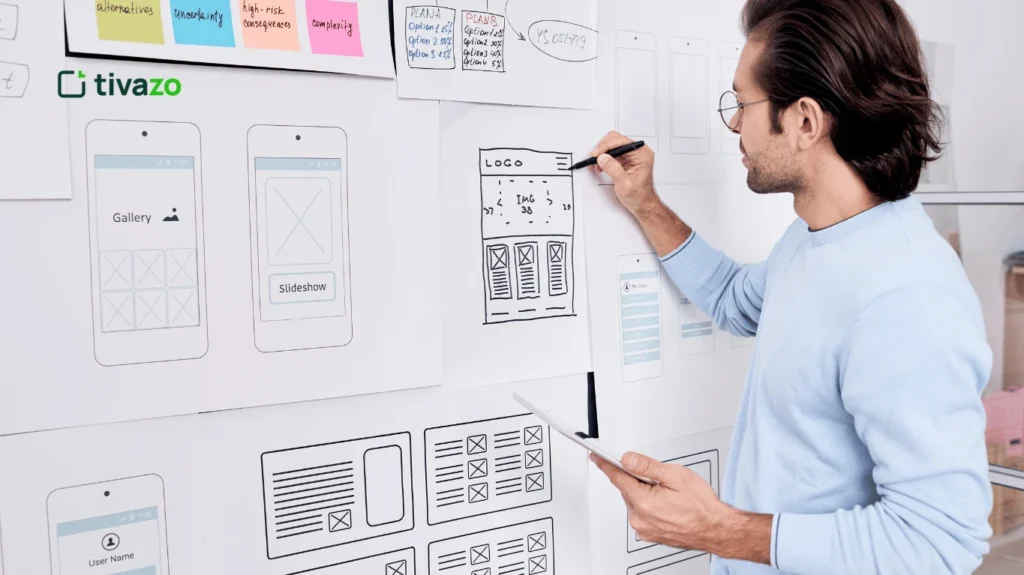
To simplify and maximize information retention, teams tend to use visual tools when making presentations, dashboards, and infographics. According to HubSpot, 36-42 percent more comprehension was observed once visual content was included.
Strong visual aids help in the workplace so that the ideas heard are also seen and remembered, so the teams can act in line with each other.
5. Formal Communication
Formal communication has a maintained subset of the chain of command, and most of the time is organized and reported. These may be HR policies, announcements on a company-wide scale, and minutes of board meetings.
It is a vital form of communication in terms of accountability, organizational consistency, and decision-making. It guarantees that such information exchanged is professional and traceable and that it is respected.
The situation would be under control when the employees are educated to remember formal channels and follow them correctly, particularly in cases when certain topics are discussed or strategic information changes hands.
6. Informal Communication
Informal communication occurs rather informally through colleagues, during breaks, using a chat application, or impromptu conversations between colleagues. It is chaotic, yet it is very essential concerning the bonding of teams and generating ideas.
Informal communication may be very productive, although it is not officially noted. It stimulates and develops the imagination, rapport, trust, and a feeling of belonging and community among the people at work.
Coincidentally, organizations with healthy informal communication enjoy higher engagement and a greater internal culture.
7. Digital Communication
Digital communication means conducting business online with digital tools like email and instant messaging and tasks like utilizing Slack or Microsoft Teams. This has assumed the central role in communication in remote and hybrid work realities.
To guarantee productive among different types of communication in the workplace, it is recommended that the appropriate tool be selected in relation to a particular situation: formal announcements are made by using email to make some casual updates in the chat, whereas to discuss the problem in detail, shared documents or platforms could be used.
Setting the rules of digital conduct, including the way messages should be formatted and how other people should respond, would reduce the risks of misunderstandings and digital burnout.
8. Feedback Communication
Feedback communication is the communication of performance information, recommendations, praise, or positive corrections. It is imperative for employee satisfaction and professional development.
Consistent feedback allows creating a culture of a growth mind and avoiding minor problems from developing into serious conflicts. When well done, it inspires people and makes them productive.
The provision of feedback and receiving it should be a part of the conversation, and the establishment of teams should implement it by considering it during frequent corporate meetings, reviews, or casual check-ins.
9. Cross-Cultural Communication
Cross-cultural communication is important in cross-cultural or global teams. This involves dealing with language barriers, uneven social beliefs, and contrasting communication expectations.
Confusion or conflict can happen because of miscommunication of cultural differences. The leaders should take the initiative to establish a welcome communication culture through the use of plain language and inviting discussions.
Appreciation and perception of cultural differences enhance cooperation and innovation within international teams at workplaces.
10. Communication Styles
In addition to the method, the manner in which people speak also counts a lot. Zendesk outlines four major styles that include assertive, passive, aggressive, and passive-aggressive.
The most effective is assertive communication—it is confident, respectful, and clear. The result of passive and aggressive styles is usually a tense situation or misalignment. Trust may be eroded without really being noticed through passive-aggressive behavior such as sarcasm or avoidance.
Being understood by others before defining your own communication style helps in a better relationship and also reduces friction the different types of communication in the workplace.
Applying these types of communication in the workplace can enable the teams to work more effectively, understand diversity, and make strong working relationships.
How Tivazo Helps Improve Workplace Communication Effectively?
Tivazo transforms different types of communication in the workplace and collaboration by delivering real-time visibility into team activity, time tracking, and feedback loops. Its real-time dashboard and screenshot monitoring reduce guesswork, helping managers spot idle time and share performance insights instantly, boosting effective workplace communication. Tivazo’s cross-platform compatibility (Windows, Mac, Linux) and instant notifications ensure everyone stays aligned, cutting through digital clutter and communication barriers. Plus, built-in reporting and analytics streamline team collaboration by offering crystal-clear metrics your teams can act on. With Tivazo, communication isn’t messy; it’s intentional, transparent, and productivity-driven. Ready to upgrade your internal communication methods in business?
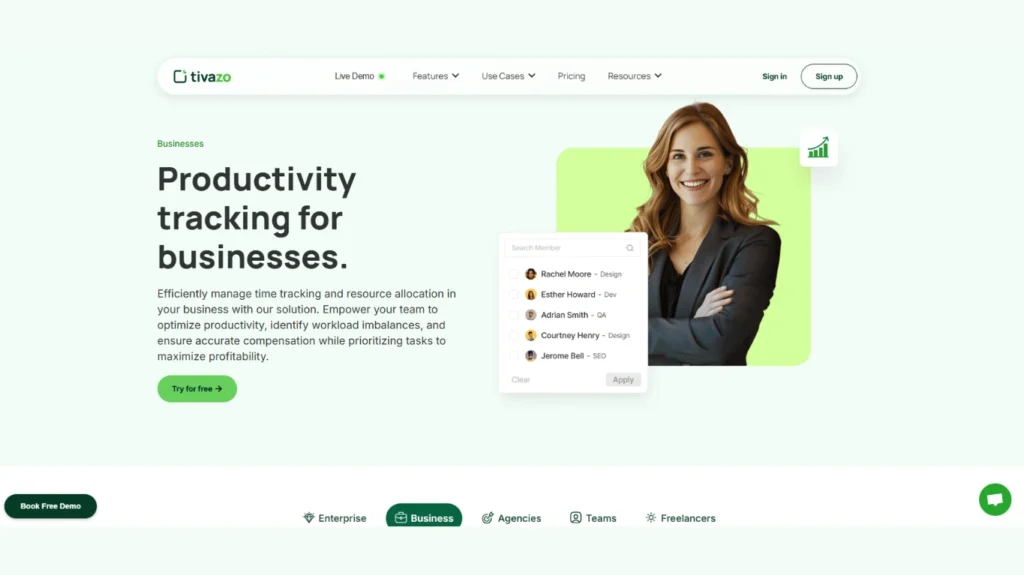
Conclusion
The contemporary business enterprise relies on the types of communication in the workplace to operate efficiently. Whether it is formal memos or body language and instant messages, the better you understand how to use and how to maneuver through them all, the better a team player and a leader you will be.
And the actual question is, what type of communication do you have to work on today at the workplace?
What are the 4 basic styles of communication?
The four main communication styles are assertive, passive, aggressive, and passive-aggressive. Assertive is considered the healthiest and most effective in workplace environments.
What is manipulative communication?
Manipulative communication is a controlling and deceptive style where someone uses guilt, passive-aggression, or flattery to influence others without being direct or honest.
How do manipulative people talk?
Manipulative people often avoid direct statements, use guilt-tripping or sarcasm, and twist words to confuse or control conversations while hiding their true intentions.
